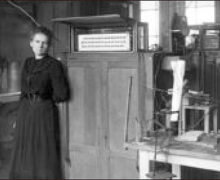
“La Sirenita”… La Verdadera Historia
“The Little Mermaid”... The True Story
El cuento “La Sirenita” es una famosa narración escrita por Hans Christian Andersen un autor danés del siglo XIX, (2/4/1805- 4/81875), que relata la vida de una joven sirena, que al enamorarse de un príncipe, desear tener un cuerpo humano para estar con él.
A lo largo del cuento, Andersen explora temas como la belleza física versus la belleza interior, la comunicación, el sacrificio, la renuncia, la dificultad de adaptarse a nuevos entornos y el amor no correspondido.
A lo largo de los años, “La Sirenita” ha sido adaptada en diferentes formatos, la versión animada de Disney, lanzada en 1989, es la que popularizo el cuento.
Trato con la Bruja
En el cuento original, la Sirenita hace un trato con la bruja del mar, quien le corta la lengua a cambio de darle forma humana, esto es una tortura para la pobre sirena, ya que no sabe utilizar sus nuevas piernas y camina dolorosamente… es importante para comprender el relato que la bruja crea una línea de tiempo, es decir, que se debe casar con el príncipe en un plazo determinado o, la alternativa que ofrece la bruja es, matar al príncipe… si estas dos cosas no ocurrieran se convertirá en espuma de mar.…
En el relato original el príncipe se enamora de otra mujer y la sirena debe decidir si matar al príncipe para salvarse a sí misma, pero la opción elegida es lanzarse al mar y, como lo predijo la bruja, se convierte en espuma, pero gracias a la intervención del espíritu del aire, la sirenita logra la inmortalidad.
Una alegoría
Andersen se inspiró para escribir el cuento después de escuchar varias leyendas y mitos sobre sirenas, el objetivo era escribir una narración que combinara elementos de fantasía con su historia personal.
En realidad el relato refleja la verdadera historia de Hans Christian Andersen, cuando se entera que su amante y amor de su vida, se casaba con una mujer.
Llega a nosotros la apasionada correspondencia de Anderson a Collins que expresaba…
“Te anhelo, sí, este momento te anhelo como si fueras una niña encantadora… A nadie he querido azotar tanto como a ti… pero tampoco a nadie he querido tanto por mí como a ti…
Mis sentimientos por ti son los de una mujer, la feminidad de mi naturaleza y nuestra amistad deben seguir siendo un misterio”.
Una alegoría
Anderson en el relato “La sirena” nos muestra que no solo quiere a una persona en particular, ella quiere pertenecer, quiere salir de las profundidades y encontrar aceptación sin tener que renunciar a su voz, aunque tenga que esperar 300 años para hacerlo.
Como sabemos la sirenita es muda, porque es una forma que tiene Anderson de expresar la prohibición de hablar libremente de su amor, el cambio de su cola de paz por piernas humanas es para mostrar su disposición de adaptabilidad a un amor prohibido.
En el cuento real la sirenita al igual que Anderson sufren su destino, su amado acaba casándose con otra y ambos sienten que han perdido al amor de su vida.
No creo que Anderson estuviera en desacuerdo con el final feliz de la versión de Disney, donde la sirenita se casa con su príncipe amado, porque ese era el final que él hubiera deseado para su vida.
The story “The Little Mermaid” is a famous narrative written by Hans Christian Andersen, a Danish author of the 19th century, (2/4/1805- 4/81875), which recounts the life of a young mermaid, who, falling in love with a prince, wanting to have a human body to be with him.
Throughout the story, Andersen explores themes such as physical beauty versus inner beauty, communication, sacrifice, resignation, the difficulty of adjusting to new surroundings, and unrequited love.
Over the years, “The Little Mermaid” has been adapted in different formats, Disney’s animated version, released in 1989, is the one that popularized the tale.
Deal with the Witch
In the original tale, the Little Mermaid makes a deal with the sea witch, who cuts out her tongue in exchange for giving her a human form. This is torture for the poor mermaid, since she doesn’t know how to use her new legs and walks painfully. It is important to understand the story that the witch creates a time line, that is, that she must marry the prince within a certain period of time or, the alternative offered by the witch is, kill the prince… if these two things do not occur it will turn into sea foam.…
In the original story, the prince falls in love with another woman and the mermaid must decide whether to kill the prince to save herself, but the chosen option is to jump into the sea and, as the witch predicted, she turns into foam, but thanks to Through the intervention of the spirit of the air, the little mermaid achieves immortality.
Love story
Andersen was inspired to write the tale after hearing various legends and myths about mermaids, the goal was to write a narrative that combined fantasy elements with her personal story.
Actually the story reflects the true story of Hans Christian Andersen, when he finds out that his lover and love of his life, married a woman.
The passionate correspondence from Anderson to Collins that expressed…
“I long for you, yes, this moment I long for you as if you were a lovely girl… I have never wanted to spank anyone as much as you… but I have not loved anyone as much for myself as you…
My feelings for you are those of a woman, the femininity of my nature and our friendship must remain a mystery.”
An allegory
Anderson in the story “The Mermaid” shows us that she doesn’t just want a particular person, she wants to belong, she wants to come out of the depths and find acceptance without having to give up her voice, even if she has to wait 300 years to do so.
As we know the little mermaid is mute, because it is a way that Anderson has of expressing the prohibition of speaking freely about his love, the change of his tail of peace for human legs is to show his willingness to adapt to a forbidden love.
In the true story, the little mermaid, like Anderson, suffers their fate, their beloved ends up marrying another and both feel that they have lost the love of their lives.
I don’t think Anderson would disagree with the happy ending of the Disney version, where the little mermaid marries her beloved prince, because that was the ending he would have wanted for his life.
























